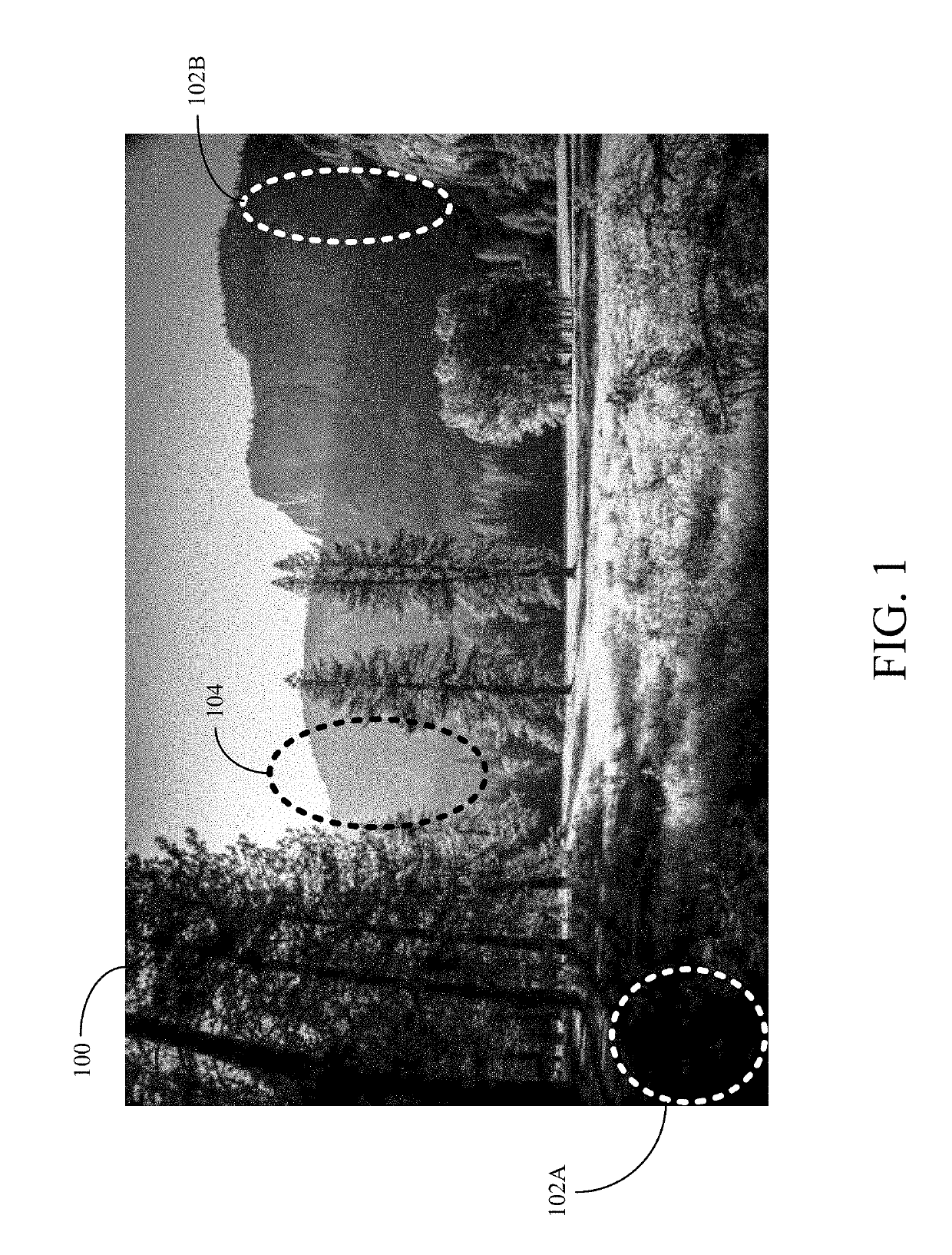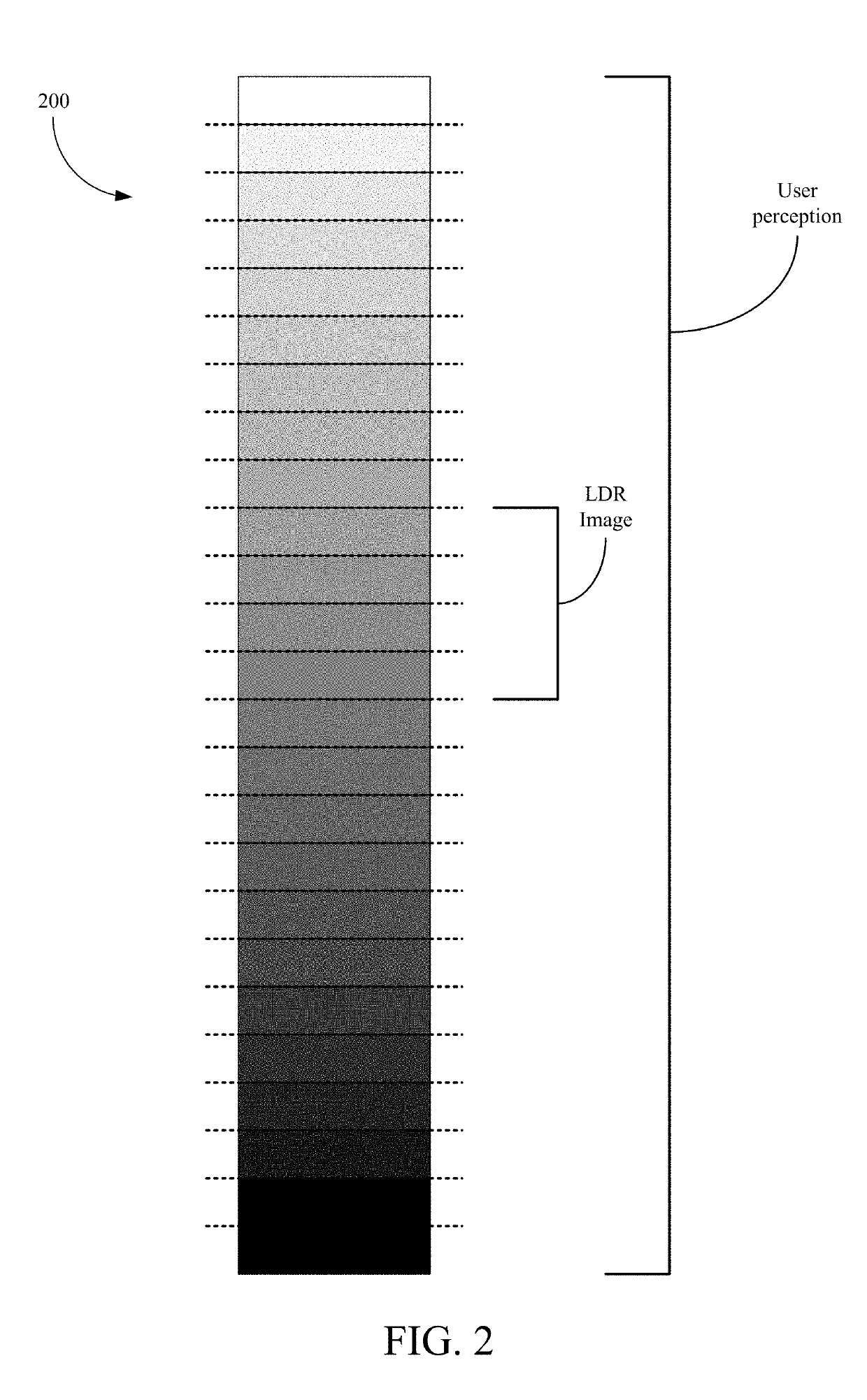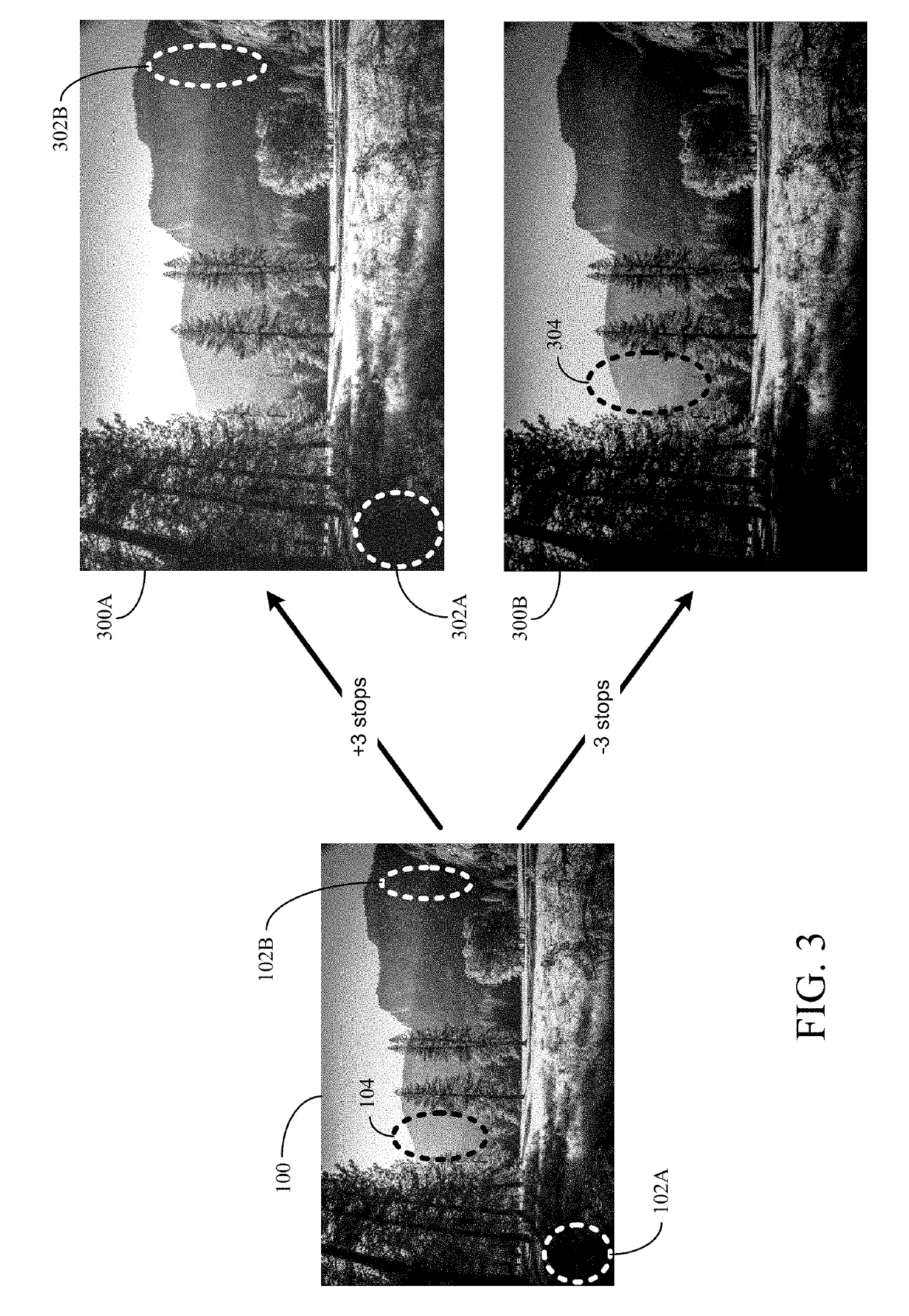Systems and methods for high-dynamic range imaging
a high-dynamic range, imaging technology, applied in the field of high-dynamic range (hdr) imaging, can solve the problems of limited brightness range, muted or dull captured ldr or sdr image,
- Summary
- Abstract
- Description
- Claims
- Application Information
AI Technical Summary
Benefits of technology
Problems solved by technology
Method used
Image
Examples
Embodiment Construction
[0024]Aspects of the present disclosure may be used for generating HDR images. In some implementations, a device may capture multiple LDR or SDR images having different ranges of brightness, and then blend the multiple captured images to generate an HDR image. By blending the multiple captured images having different ranges of brightness, the resulting HDR image may have a larger range of brightness than conventional LDR or SDR images. In the following description, a single image captured using a camera sensor's standard or limited range of brightness is referred to as a LDR image. However, the term “LDR image” is for explanation purposes and is not intended to limit aspects of the disclosure. For example, a LDR image may be any image having a range of brightness that is than the range of brightness for an associated HDR image.
[0025]A digital camera sensor typically captures a limited range of brightness for a LDR image. To capture different ranges of brightness for multiple LDR ima...
PUM
 Login to View More
Login to View More Abstract
Description
Claims
Application Information
 Login to View More
Login to View More - R&D
- Intellectual Property
- Life Sciences
- Materials
- Tech Scout
- Unparalleled Data Quality
- Higher Quality Content
- 60% Fewer Hallucinations
Browse by: Latest US Patents, China's latest patents, Technical Efficacy Thesaurus, Application Domain, Technology Topic, Popular Technical Reports.
© 2025 PatSnap. All rights reserved.Legal|Privacy policy|Modern Slavery Act Transparency Statement|Sitemap|About US| Contact US: help@patsnap.com



